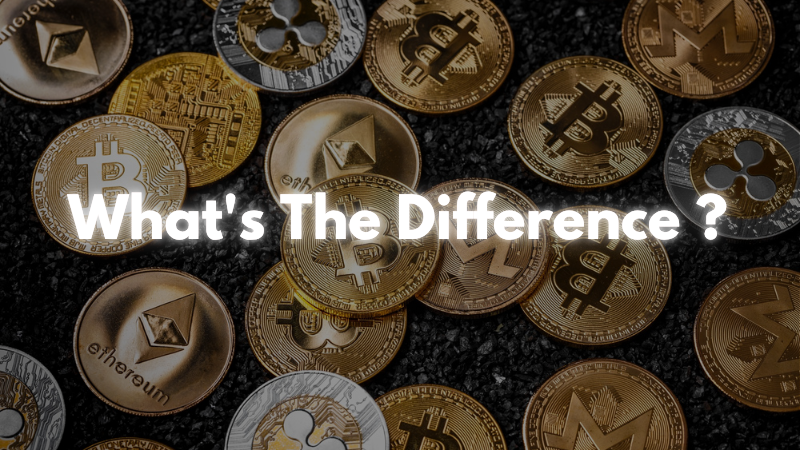Crypto Tokens vs Coins: What’s the Difference & Why It Matters in 2025 (Preview)
If you’ve been exploring the world of crypto, you’ve probably come across two terms: coins and tokens. At first glance, they might seem like the same thing. After all, both hold value and can be traded. But there’s a big difference between the two—and understanding that can actually help you make smarter investment decisions, especially in 2025 where the crypto space is evolving fast.
Let’s break it down in simple terms.
Table of Contents

Crypto Tokens vs Coins: What’s the Difference & Why It Matters in 2025
🪙 What Exactly Are Crypto Coins?
Coins are the original cryptocurrencies. Think of Bitcoin, Litecoin, or Ethereum. These run on their own blockchains. Bitcoin has the Bitcoin blockchain. Ethereum has the Ethereum blockchain.
Coins are mostly used as digital money. You can use them to buy, sell, hold, or transfer value. Some coins, like Ethereum, also power transactions and smart contracts within their ecosystem.

So, in short:
- They have their own blockchain
- They’re mainly used as currency or value transfer
- Examples: BTC, ETH, LTC
Crypto Tokens vs Coins: What’s the Difference & Why It Matters in 2025
🎟️ What Are Tokens Then?
Tokens are built on top of an existing blockchain—most commonly Ethereum. They don’t have their own blockchain. Instead, they rely on the blockchain they’re built on to function.
Tokens can represent anything: access to a service, voting rights, membership, or even real-world assets like gold or real estate. They’re like apps built on the operating system that is a blockchain.
Some popular tokens include:

- USDT (Tether) – a stablecoin pegged to the US dollar
- UNI (Uniswap) – governance token for a DeFi platform
- LINK (Chainlink) – used for data feeds in smart contracts
In short:
- They run on another blockchain
- They serve more diverse purposes (utility, governance, etc.)
- They’re key players in DeFi, NFTs, and Web3 apps
⚖️ Key Differences betwwen Token and Coins
| Feature | Coins | Tokens |
|---|---|---|
| Blockchain | Own blockchain | Built on another blockchain |
| Primary Use | Digital currency | Utility, access, rights, etc. |
| Examples | BTC, ETH, LTC | USDT, UNI, LINK |
| Minting Process | Mining/Staking | Smart contract-based |
🚀 Why It Matters More Than Ever in 2025
Crypto is no longer just about buying low and selling high. It’s about understanding how different assets fit into the bigger picture.
In 2025, we’re seeing:
- More regulation: Governments treat coins and tokens differently. Knowing the difference helps with compliance.
- Smarter investing: Tokens often power platforms. Coins may hold long-term value. Knowing where your money goes = better decisions.
- Web3 growth: Most Web3 apps use tokens. If you’re into NFTs, DAOs, or DeFi, you’re using tokens, not coins.
🧠 Final Thoughts
Knowing the difference between a crypto coin and a token isn’t just trivia—it’s the kind of foundational knowledge that separates casual dabblers from confident participants.
Whether you’re investing, trading, or building in crypto, understanding how these assets work can save you time, money, and confusion. So next time someone says “crypto,” you’ll know what’s really behind that word.
If you are from India and you want to earn money from sports fantasy then Click to know this
If you want to know about crypto daily and get investment tips then visit this website daily. Click here
If you are interested in travel blog then must visit Wanderora Click to visit